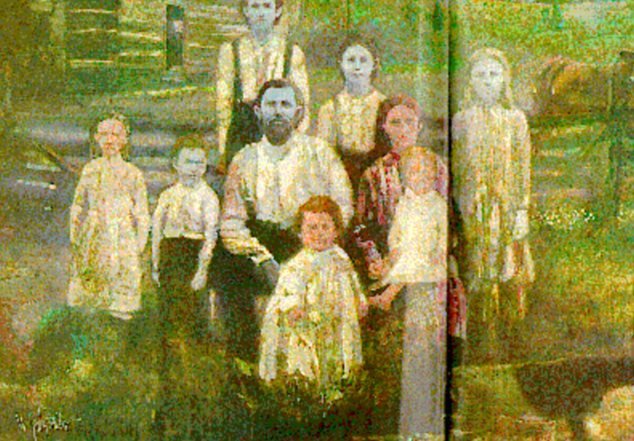Thanks to overdosing on pop culture, we know a lot of blue people.
The Smurfs

The Na’vis from Pandora.

The Blue Man Group

The mutant with arguably the coolest superpower, Nightcrawler

Shiva, Ram and Krishna

And we can’t simply not include Tobias Funke.

But most of them are either fictional or stage personas.
As history is full of crazy ass facts, a little online wandering let us to the story of a family where some members actually had blue skin. Read on, for it’s time you knew about the ‘Blue Fugates’ of Kentucky.
In the 1800’s, a French orphan named Martin Fugate settled in the remote Appalachian part of Kentucy, where he eventually married a pale-skinned woman named Elizabeth Smith. Some say, Fugate had a peculiar blue tinge to his skin. Their union led to a type of genetic mutation which then caused some of their descendants to have blue skin. Out of the seven children they had, four had blue skin, especially when they were younger.
Here’s a colorized photograph of the ‘Blue Fugates’ of Kentucky.

Back then, the remoteness of their home and the sparse population of the area ensured that the Fugates married locally and so did their descendants. The Fugate progeny had a genetic condition called methemoglobinemia, which was passed down through a recessive gene, met-H, and which spread through intermarriage.
The family was first discovered in 1958 when one of the blue men, Luke Combs, who was a descendant of another branch of the Fugate family, took his white wife to the University of Kentucky Hospital and doctors paid more attention to him than his wife.
Doctor Charles H. Behlen II told the Tri-City Herald in 1974 – “Luke was just as blue as Lake Louise on a cool summer day.”
When someone suffers from this condition, it means their blood has a higher amount of methemoglobin than the usual ferrous haemoglobin. Without going into too much detail, let’s just say that the people who have this characteristic, their blood is less likely to be able to bind oxygen in it. Haemoglobin is responsible for distributing oxygen to the body and without oxygen, the heart, brain and muscles can die. Reddit user xxambellina explained it best in her AMA (Ask Me Anything) session.
So normal people have ferrous iron in their blood with a tiny (less than 1%) amount of ferric iron. I have a large amount of ferric iron (12-19%) in my blood. The ferric iron binds to the red blood cells/ oxygen and even though there is oxygen there the ferric iron “hangs on” to it and won’t release it to bind to my tissues.
The last known descendant of the ‘Blue Fugates’ of Kentucky is a man named Ben Stacy, who now lives in Alaska. He was born with blue skin in 1975 and at that time, the doctors were about to prepare a blood transfusion when his grandmother stopped them with more info about his condition. She said that his great-grandmother, who lived till 84, was once described as “the bluest woman I ever saw” by many during her lifetime. That established the fact that Stacy’s condition was the result of the recessive gene being passed down the line. He grew out of it as he grew older.

While there are no known ‘Blue Fugates’ in the world now, it does not mean that the met-H gene has disappeared. The descendants of the original Fugates are still around, and you never when some coincidence can re-ignite the mutation and result in blue skin.
Source credits –

















